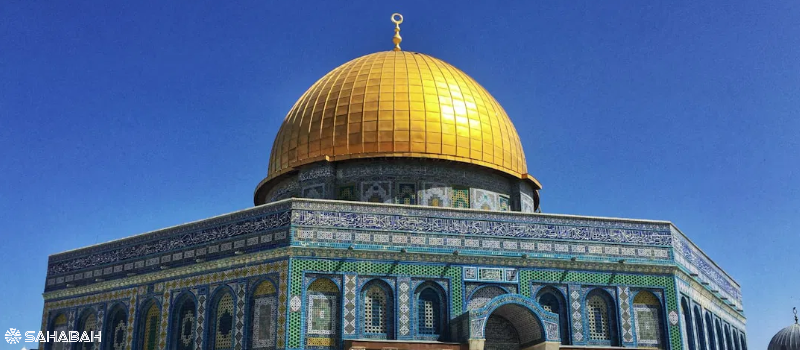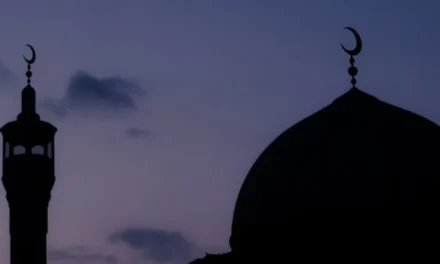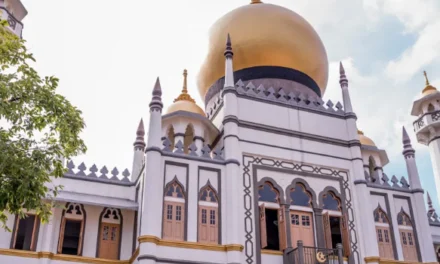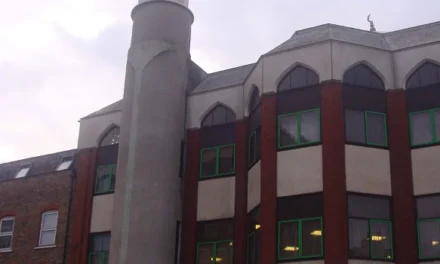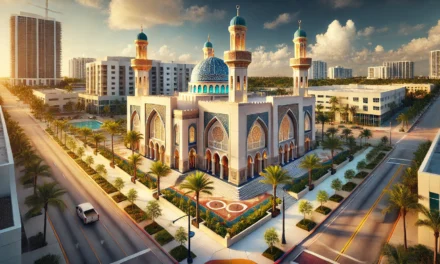The Al-Aqsa Mosque stands as a testament to Islamic heritage in East Jerusalem, representing one of the most significant religious sites in Islam. Located within the Old City of Jerusalem, this revered structure serves as the third holiest site for Muslims worldwide, following the sacred mosques of Mecca and Medina. The mosque, situated within the expansive Al-Aqsa compound, also known as the Temple Mount, has been a center of worship and cultural significance for over 1300 years.

The Historical Significance of Al-Aqsa Mosque in Islam
The rich history of Al-Aqsa Mosque dates back to the earliest days of Islam. As the Farthest Mosque mentioned in Islamic texts, it holds profound religious significance as the location of Prophet Muhammad’s (pbuh) miraculous night journey, known as Isra and Mi’raj.
Historical Timeline and Development
| Period | Event | Historical Significance |
|---|---|---|
| 637 CE | Initial Construction | Omar ibn Al-Khattab builds first mosque |
| 691-692 CE | Dome of the Rock | Completion of the iconic golden dome |
| 705-715 CE | Major Expansion | Umayyad expansion of the Al-Aqsa compound |
| 1099-1187 CE | Crusader Period | Temporary conversion to royal palace |
| 1187 CE | Islamic Restoration | Saladin restores Islamic character |
| 1927 CE | Earthquake Damage | Major reconstruction needed |
| 1969-1974 CE | Modern Restoration | Comprehensive renovation project |
Architecture and Design Elements of Al-Aqsa Mosque
The present-day mosque showcases remarkable architectural features that combine various Islamic styles. Located within the Al-Aqsa Mosque compound, the structure demonstrates the evolution of Islamic architecture over centuries.
Key Structural Features
Physical Dimensions:
- Total area: 144,000 square meters (compound)
- Main mosque: 80 x 55 meters
- Prayer capacity: 5,000 worshippers
- Four historic minarets
Notable Elements:
- Silver-domed main prayer hall
- Seven parallel aisles
- Historic mihrab (prayer niche)
- Ancient wooden minbar
- Byzantine and Umayyad mosaics

Inside Al-Aqsa Mosque: A Detailed Look
The interior of Al-Aqsa Mosque reveals centuries of Islamic artistry and architectural innovation. The main congregational mosque features several distinct areas:
Prayer Halls and Sacred Spaces
Main Prayer Hall Features:
- Ornate marble columns
- Decorated ceiling with geometric patterns
- Historic inscriptions
- Traditional prayer carpets
- Acoustic architecture for call to prayer
Architectural Preservation
The mosque has undergone numerous restoration projects to maintain its structural integrity and religious significance. Recent efforts include:
Conservation Projects:
- Structural reinforcement
- Mosaic restoration
- Wooden element preservation
- Dome maintenance
- Foundation strengthening

Visiting Guidelines for Al-Aqsa Mosque
Access to the Al-Aqsa Mosque compound requires understanding specific protocols and guidelines. The site, managed by the Jerusalem Islamic Waqf, welcomes visitors under certain conditions.
Essential Visitor Information
| Aspect | Details | Notes |
|---|---|---|
| Opening Hours | Dawn to Dusk | Prayer times vary |
| Dress Code | Modest clothing required | Specific guidelines apply |
| Access Points | 11 gates | Not all always accessible |
| Security | Entry checks | Standard procedures |
| Photography | Limited permissions | Special rules apply |
Religious and Cultural Significance in Modern Times
The Al-Aqsa Mosque continues to serve as a vital center for Islamic worship and cultural preservation in Jerusalem. Its significance extends beyond religious practice to encompass:
Religious Importance:
- Daily prayers and weekly Friday congregations
- Special Ramadan gatherings
- Islamic educational programs
- Cultural and historical preservation
Frequently Asked Questions About Al-Aqsa Mosque
Common Queries and Expert Answers
-
What makes Al-Aqsa Mosque significant in Islam?
- Third holiest site in Islam
- Site of Prophet Muhammad’s (pbuh) night journey
- First Qibla (direction of prayer) for early Muslims
-
How can visitors access Al-Aqsa Mosque?
- Entry procedures vary
- Different rules for Muslims and non-Muslims
- Specific visiting hours apply
- Security clearance required
-
What are the architectural highlights of Al-Aqsa Mosque?
- Historic silver dome
- Ancient prayer halls
- Traditional Islamic design elements
- Preserved historical features
Current Status and Preservation Efforts
The preservation of Al-Aqsa Mosque involves ongoing efforts to maintain both its physical structure and religious significance. Current initiatives focus on:
Conservation Areas:
- Structural integrity maintenance
- Historical element preservation
- Environmental protection measures
- Cultural heritage documentation
- Educational program development
FAQ: What is the significance of the Al Aqsa Mosque?
The Al Aqsa Mosque is one of the holiest sites in Islam, located in East Jeruselem in occupied Palastine. It holds historical and spiritual significance as it is believed to be the site where the Prophet Muhammad (pbuh) was transported during the Night Journey. The mosque and its precincts are also a focal point of the Israeli-Palestinian conflict, making access to the site a sensitive issue.
How does the Israeli police regulate access to the Al Aqsa Mosque?
The Israeli police enforce strict regulations regarding access to the Al Aqsa Mosque, especially during periods of heightened tension. They often check identification and may restrict entry based on age or other criteria, particularly for Palestinian worshippers from the occupied West Bank.
What are the different sections of the Al Aqsa Mosque complex?
The Al Aqsa Mosque complex includes several key sections such as the Qibli Mosque, the Dome of the Rock, and the Marwani Mosque. Each of these areas holds its own historical significance and architectural beauty, attracting visitors and worshippers alike.
What events have taken place at the Al Aqsa Mosque that have involved Israeli forces?
Over the years, there have been numerous incidents at the Al Aqsa Mosque that involved Israeli security forces, including confrontations during prayers, restrictions on access, and the eviction of worshippers. These events often escalate tensions in the area and have been a focal point of the Al-Aqsa Intifada.
Can non-Muslims visit the Al Aqsa Mosque?
Yes, non-Muslims can visit the Al Aqsa Mosque complex, but their access is heavily regulated by Israeli authorities. Visits are typically allowed during specific hours, and non-Muslims are not permitted to pray inside the mosque or at the Dome of the Rock.
What is the role of Al Jazeera in reporting on the Al Aqsa Mosque?
Al Jazeera plays a significant role in covering events related to the Al Aqsa Mosque and the broader Israeli-Palestinian conflict. The network often reports on tensions, protests, and the impact of Israeli policies on access to the mosque and its surrounding areas.
What are the implications of the Israeli government’s policies on the Al Aqsa Mosque?
Israeli government policies regarding the Al Aqsa Mosque can lead to increased tensions between Israeli authorities and Palestinian worshippers. Restrictions on access and the presence of Israeli forces often result in protests and clashes, reflecting the ongoing conflict over rights and sovereignty in the region.
How do prayers at the Al Aqsa Mosque differ from other mosques?
Prayers at the Al Aqsa Mosque are considered particularly significant due to its status as the third holiest site in Islam. Many Muslims aspire to pray at the mosque, and during major religious events, the number of worshippers can swell significantly, creating a unique atmosphere of devotion and community.
What architectural features distinguish the Al Aqsa Mosque and the Dome of the Rock?
The Al Aqsa Mosque is known for its distinctive facade and large silver dome, while the Dome of the Rock is renowned for its stunning gold dome and intricate mosaics. Together, they form a key part of the mosque and its precincts, showcasing Islamic architecture’s beauty and historical significance.
Conclusion
The Al-Aqsa Mosque remains an enduring symbol of Islamic heritage and faith in Jerusalem. As the third holiest site in Islam, it continues to serve as a crucial center for worship, education, and cultural preservation. Understanding its significance helps appreciate the importance of preserving this remarkable structure for future generations.
[Note: This article provides historical and religious information about Al-Aqsa Mosque. For current visiting conditions and access requirements, please consult local authorities or official sources.]

